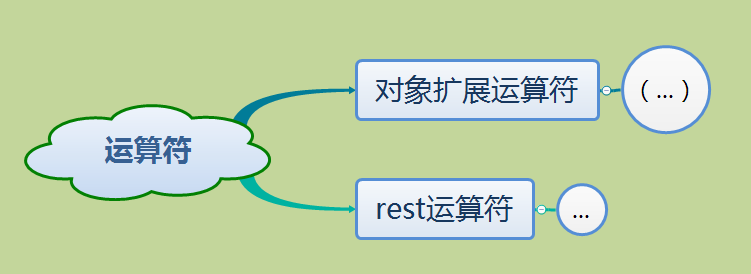ES6扩展运算符和rest运算符 ES6扩展运算符和rest运算符用法实例分析
WFaceBoss 人气:0本文实例讲述了ES6扩展运算符和rest运算符用法。分享给大家供大家参考,具体如下:
运算符可以很好的为我们解决参数和对象数组未知情况下的编程,让我们的代码更健壮和简洁。
运算符有两种:对象扩展运算符与rest运算符。

1.对象扩展( spread)运算符(...)
(1)解决参数个数问题
以前我们编程是传递的参数一般是确定,否则将会报错或者异常,如下:
function test(a,b,c,d) {
console.log(a)
console.log(b)
console.log(c)
console.log(d)
console.log(e)//e is not defined
}
test(1,2,3,4)
参数固定,多余的参数会出错。
但我们又想传递多个参数,但是不确定参数的个数,这时候可以使用对象扩展运算符来作参数。
function test1(...arg) {
console.log(arg[0]);//1
console.log(arg[1]);//2
console.log(arg[2]);//3
console.log(arg[3])//4
console.log(arg[4])//5
console.log(arg[5])//undefined
}
test1(1,2,3,4,5)
这时候程序是不会报错的,多余取值返回的结果是undefined。这说明是可以传入多个值,并且就算方法中引用多了也不会报错。
(2)解决数组赋值问题
我们先用一个例子说明,我们声明两个数组arr1和arr2,然后我们把arr1赋值给arr2,然后我们改变arr2的值,你会发现arr1的值也改变了,因为我们这是对内存堆栈的引用,而不是真正的赋值。
let arr1=['i','love','you'];
let arr2=arr1;
console.log("arr2====",arr2);
arr2.push('too');
console.log("arr1====>",arr1);
控制台输出的结果为:
["i", "love", "you"]
["i", "love", "you", "too"]
这是我们不想看到的,可以利用对象扩展运算符简单的解决这个问题,现在我们对代码进行改造。
let arr1=['i','love','you'];
let arr2=[...arr1];
console.log(arr2);
arr2.push('too');
console.log(arr1);
最终可以看到我们的arr1并没有改变,简单的扩展运算符就解决了这个问题。
2.rest运算符
(1)含义
rest参数作用: 将多余的逗号分隔的参数序列转换为数组参数
注意: rest参数必须是最后一个参数,否则报错。
rest运算符与对象扩展运算符有很多类似之处,它也用…(三个点)来表示,比如:
function test(first,...arg){
console.log("first==>",first)//0
console.log("arg=====>",arg)
}
test(0,1,2,3,4,5,6,7);
输出结果为:
first==> 0
arg=====>[1, 2, 3, 4, 5, 6, 7]
(2)如何循环输出rest运算符
用for…of循环来进行打印出arg的值
function test(first,...arg){
for(let val of arg){
console.log(val)
}
}
test(0,1,2,3,4,5,6,7);
结果为:
1,2,3,4,5,6,7
最后总结:
- 扩展运算符用三个点号表示,功能是把数组或类数组对象展开成一系列用逗号隔开的值
- rest运算符也是三个点号,不过其功能与扩展运算符恰好相反,把逗号隔开的值序列组合成一个数组
- 当三个点(...)在等号左边,或者放在形参上。为 rest 运算符
- 当三个在等号右边,或者放在实参上,是 spread运算符
或者说:放在被赋值一方是rest 运算符。放在赋值一方式 spread运算符。
希望本文所述对大家JavaScript程序设计有所帮助。
加载全部内容